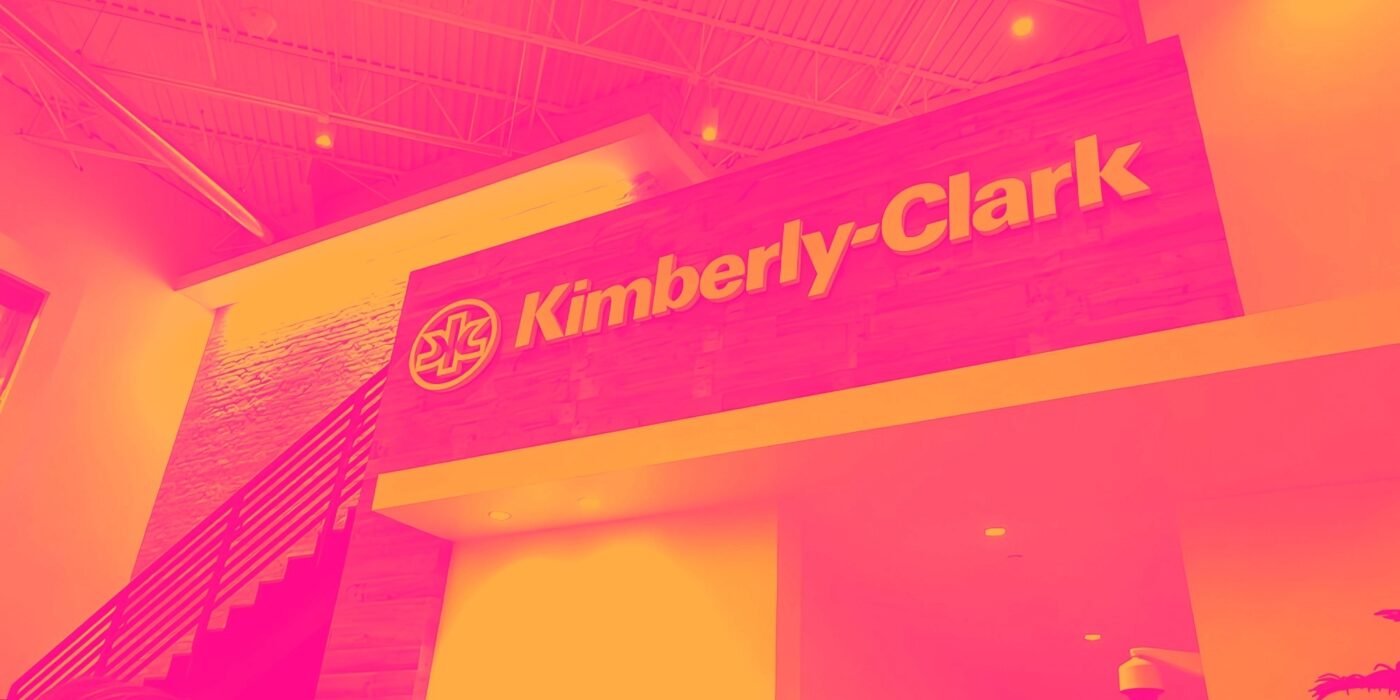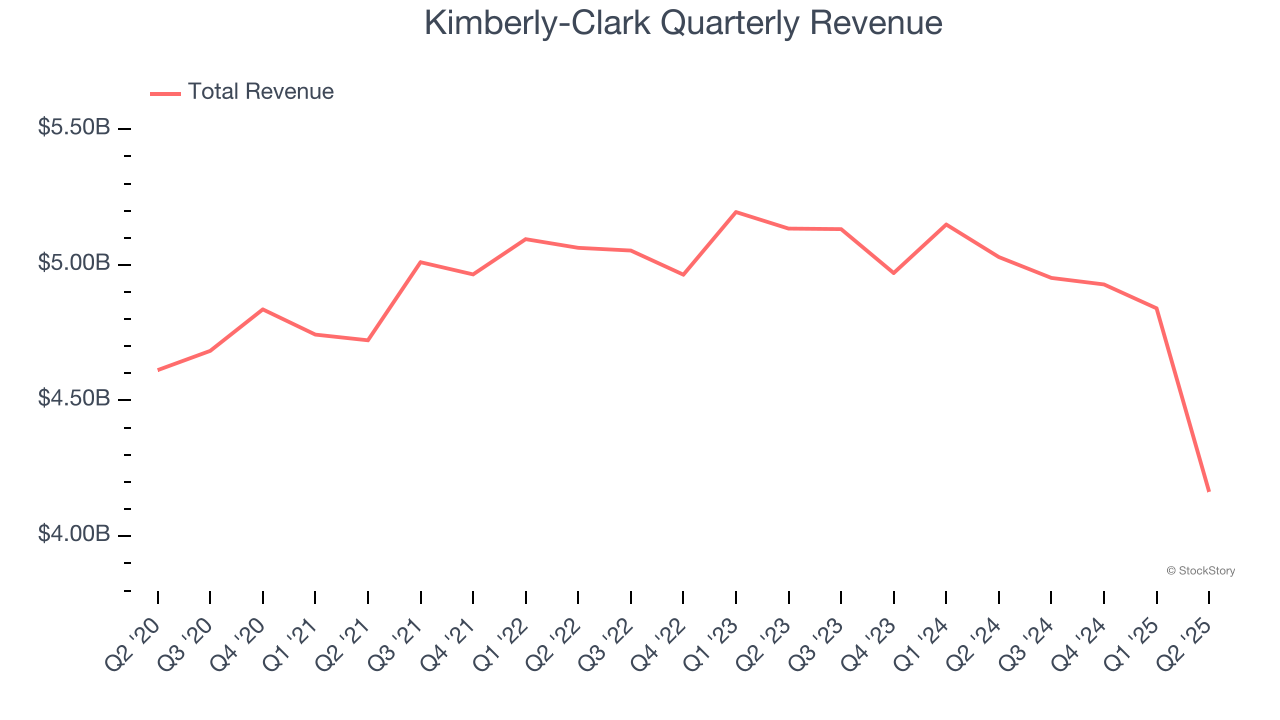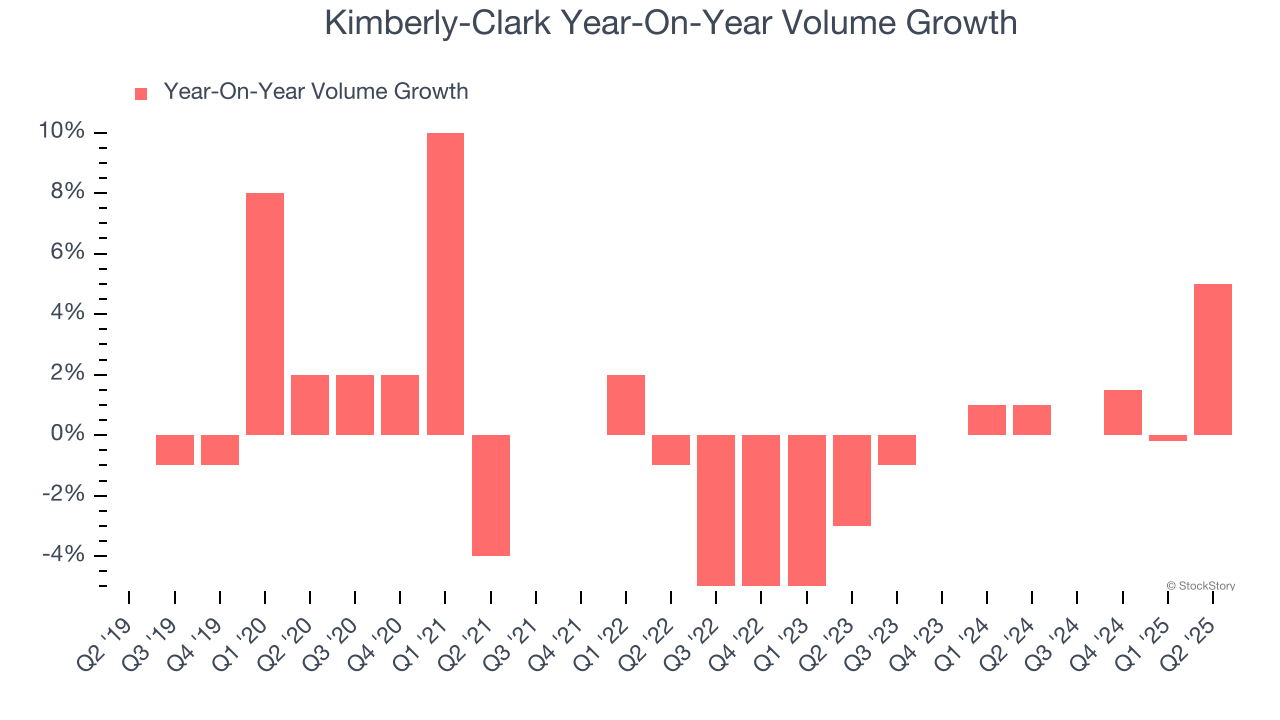
Household products company Kimberly-Clark (NYSE:KMB) fell short of the market’s revenue expectations in Q2 CY2025, with sales falling 17.2% year on year to $4.16 billion. Its non-GAAP profit of $1.92 per share was 14.8% above analysts’ consensus estimates.
Is now the time to buy Kimberly-Clark? Find out by accessing our full research report, it’s free.
Kimberly-Clark (KMB) Q2 CY2025 Highlights:
- Revenue: $4.16 billion vs analyst estimates of $4.61 billion (17.2% year-on-year decline, 9.6% miss due to the divested International Family Care and Professional ("IFP") business)
- Adjusted EPS: $1.92 vs analyst estimates of $1.67 (14.8% beat)
- Adjusted EBITDA: $782 million vs analyst estimates of $957.6 million (18.8% margin, 18.3% miss)
- Operating Margin: 14.2%, up from 13% in the same quarter last year
- Free Cash Flow Margin: 13.8%, down from 17.2% in the same quarter last year
- Organic Revenue rose 3.9% year on year, in line with the same quarter last year
- Sales Volumes rose 5% year on year (1% in the same quarter last year)
- Market Capitalization: $41.35 billion
Company Overview
Originally founded as a Wisconsin paper mill in 1872, Kimberly-Clark (NYSE:KMB) is now a household products powerhouse known for personal care and tissue products.
Revenue Growth
A company’s long-term performance is an indicator of its overall quality. Any business can have short-term success, but a top-tier one grows for years.
With $18.88 billion in revenue over the past 12 months, Kimberly-Clark is larger than most consumer staples companies and benefits from economies of scale, enabling it to gain more leverage on its fixed costs than smaller competitors. Its size also gives it negotiating leverage with distributors, allowing its products to reach more shelves. However, its scale is a double-edged sword because there are only a finite number of major retail partners, placing a ceiling on its growth. For Kimberly-Clark to boost its sales, it likely needs to adjust its prices, launch new offerings, or lean into foreign markets.
As you can see below, Kimberly-Clark struggled to generate demand over the last three years. Its sales dropped by 2.1% annually despite selling a similar number of units each year. We’ll explore what this means in the "Volume Growth" section.

This quarter, Kimberly-Clark missed Wall Street’s estimates and reported a rather uninspiring 17.2% year-on-year revenue decline, generating $4.16 billion of revenue.
Looking ahead, sell-side analysts expect revenue to remain flat over the next 12 months. While this projection implies its newer products will catalyze better top-line performance, it is still below the sector average.
Here at StockStory, we certainly understand the potential of thematic investing. Diverse winners from Microsoft (MSFT) to Alphabet (GOOG), Coca-Cola (KO) to Monster Beverage (MNST) could all have been identified as promising growth stories with a megatrend driving the growth. So, in that spirit, we’ve identified a relatively under-the-radar profitable growth stock benefiting from the rise of AI, available to you FREE via this link.
Volume Growth
Revenue growth can be broken down into changes in price and volume (the number of units sold). While both are important, volume is the lifeblood of a successful staples business as there’s a ceiling to what consumers will pay for everyday goods; they can always trade down to non-branded products if the branded versions are too expensive.
To analyze whether Kimberly-Clark generated its growth from changes in price or volume, we can compare its volume growth to its organic revenue growth, which excludes non-fundamental impacts on company financials like mergers and currency fluctuations.
Over the last two years, Kimberly-Clark’s quarterly sales volumes have, on average, stayed about the same. This stability is normal as the quantity demanded for consumer staples products typically doesn’t see much volatility. The company’s flat volumes also indicate its average organic revenue growth of 3% was generated from price increases.

In Kimberly-Clark’s Q2 2025, sales volumes jumped 5% year on year. This result was an acceleration from its historical levels, certainly a positive signal.
Key Takeaways from Kimberly-Clark’s Q2 Results
Revenue missed, but that was largely due to the divested International Family Care and Professional ("IFP") business. If we look at organic revenue growth, Kimberly-Clark beat analysts’ expectations this quarter. We were also happy its EPS outperformed Wall Street’s estimates. Looking ahead, the company continues to expect solid organic growth for the full year of at least 2%, which means Kimberly Clark will take share in key categories and countries. Overall, this quarter could have been better. The stock traded up 3% to $128.32 immediately after reporting.
Is Kimberly-Clark an attractive investment opportunity at the current price? We think that the latest quarter is only one piece of the longer-term business quality puzzle. Quality, when combined with valuation, can help determine if the stock is a buy. We cover that in our actionable full research report which you can read here, it’s free.
